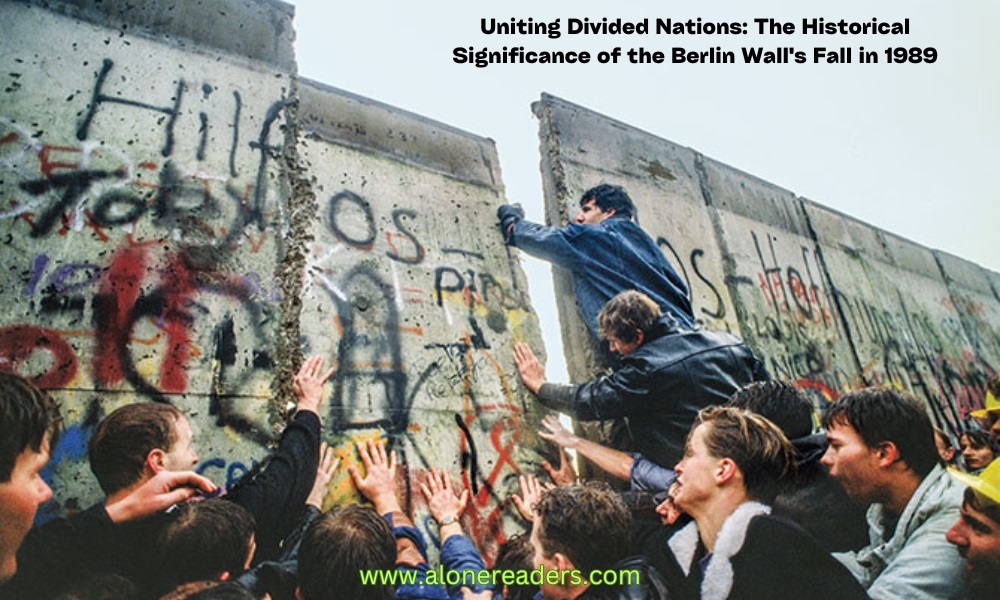
In the late hours of November 9, 1989, a seismic shift in global politics was witnessed as the Berlin Wall, an iconic symbol of Cold War division, crumbled. This event did not merely represent the physical demolition of a concrete barrier; it symbolized the union of a city, a nation, and ideologically opposed worlds. The fall of the Berlin Wall was a turning point in history, marking the end of an era of division and the start of a new age of unity and freedom.
The story of the Berlin Wall began post-World War II when Germany was divided into four zones controlled by the United States, the United Kingdom, France, and the Soviet Union. Berlin, though located entirely within the Soviet-controlled East Germany, was similarly divided. The differences in political ideology and economic policy between the capitalist West and communist East soon led to heightened tensions, culminating in the construction of the Berlin Wall in 1961 by the German Democratic Republic (East Germany). This wall was not just a physical division but a manifestation of the Iron Curtain that separated the communist Eastern bloc and the capitalist Western countries.
For 28 years, the Wall was a symbol of the Cold War, dividing families, friends, and a nation. It stood as a stark reminder of the ideological battle between democracy and communism. Over these years, numerous attempts were made by East Germans to escape to the West, many of which ended tragically. The Wall was more than just concrete and barbed wire; it was a structure of fear and oppression.
The late 1980s saw a wave of change sweeping across Eastern Europe. The Soviet Union under Mikhail Gorbachev introduced policies like Glasnost (openness) and Perestroika (restructuring), which signaled a move towards more openness and less strict governance. These policies, coupled with economic struggles, sparked a yearning for freedom and reform across the communist bloc.
In East Germany, public discontent was brewing. The exodus of East Germans to the West through Hungary, which had opened its borders, put additional pressure on the East German government. The peaceful Monday demonstrations in Leipzig and other cities grew in size and significance, signaling a turning point in the East German civil rights movement. These demonstrations were crucial in showing the world the power of peaceful protest and the strong desire for freedom and democracy among the East German people.
The fall of the Berlin Wall was as unexpected as it was dramatic. On the evening of November 9, 1989, after a miscommunicated announcement by an East German official concerning travel regulations, crowds of East Germans gathered at the Wall, demanding to cross into West Berlin. The guards, unprepared and unwilling to use force, eventually opened the gates. This moment was the culmination of years of political, economic, and social pressures, and it unleashed a tide of emotion and a rush of people towards reunification.
As people from both sides of the Wall celebrated together, chipping away pieces of the Wall as souvenirs, the world watched in awe. This moment was not just about Germany; it was a symbol of hope for the entire world, demonstrating the power of the human spirit in the quest for freedom and unity.
The fall of the Berlin Wall had profound geopolitical consequences. It marked the beginning of the end of the Cold War and paved the way for German reunification less than a year later. This event also accelerated the disintegration of the Eastern Bloc and eventually the Soviet Union itself in 1991. The reunification of Germany was a complex and challenging process, involving economic, political, and social integration. The "Ostalgie," a form of nostalgia for some aspects of life in East Germany, reflects the complex feelings some Easterners have about the changes since reunification.
This historical event is not just a story of political change; it is a testament to the indomitable human desire for freedom and self-determination. The Berlin Wall serves as a reminder of the past divisions and the remarkable capacity for change. It reminds us of the importance of unity, understanding, and the shared pursuit of a world where freedom and justice prevail.
Today, remnants of the Wall stand as a memorial and a tourist attraction, drawing people from all corners of the world. They come not only to see a piece of history but to reflect on the lessons it teaches about division, unity, and the human spirit. The fall of the Berlin Wall is a story that continues to inspire and educate; it is a story of how barriers can be broken, both physically and metaphorically, in the pursuit of a better, united future.